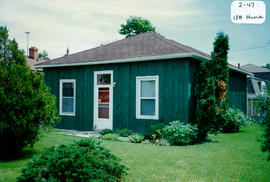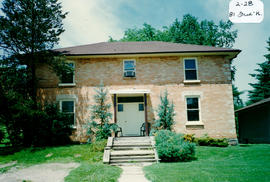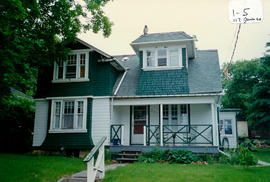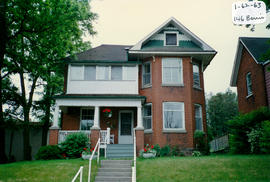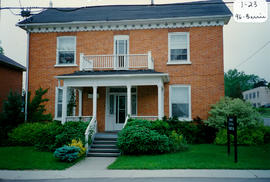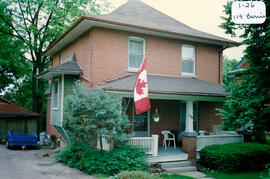- CA BWGPL GJ-HB-2017-03-22-15
- Item
- 1996
Part of George Jackson fonds
The house located at 138 Hurd St. (on the southeast corner of Hurd and Essa Streets) was built in the Ontario Vernacular Cottage style around 1860-90. It was the home of Howard Bowser many years ago. He worked for Dennis Nolan.
The one-storey, three-bay ‘cottage’ has a simple, square plan and a pointed, hip roof. It also has a symmetrical façade and there is a lack of decoration or a porch addition. The entrance door has a transom above. Narrow windows (replacements) have plain, wood lug sills and trim. This modest house has wood frame construction and a parged, stone foundation. The original stucco is now covered by wood cladding. According to the 2000 inventory, the building once had a small porch at the front entrance and a large verandah at the rear. (1, 3)
George Jackson

